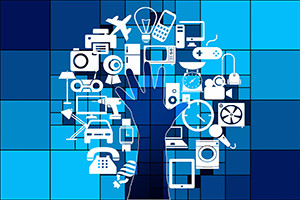
The Internet of Things (IoT) has made a revolutionary impact on the automotive industry. Just like our smartphones, our cars have become smart cars, more commonly referred to as connected cars. Modern automobiles have the ability to produce, capture, store, process, analyze, and transmit large amounts of data to assist drivers and provide information – telematics. This data can be stored within the vehicle or transmitted to the cloud, the manufacturer or a designated insurance company.
With the increased intelligence of vehicles, forensic investigators are finding new data available to support their investigations and to verify their findings. Research is required to determine what data is available in a specific circumstance. A forensic investigation of an auto-related event generally relies on these three types of data:
- Driver (driver data and inputs such as steering, braking, acceleration)
- Vehicle (equipment and safety systems activation, maintenance records)
- Environment (weather, road conditions, traffic)
We are seeing different devices and industries beginning to utilize connected technology and telematics to capture and make use of these types of data. Here are several examples of trends we are seeing now and what may be coming in the near future that could be very useful for forensic investigations.
Telematics devices
Late model vehicles may be equipped with a manufacturer-exclusive telematics system like GM’s Onstar, Land Rover’s Icontrol, Mercedes Mbrace and Ford’s SYNC. Additionally, there is an abundance of aftermarket telematics solutions that can plug into the on-board diagnostics (OBD) connector under the dash for vehicles with a model year of 1996 or newer. They can sync with a smartphone and provide the same data newer vehicles capture. Inexpensive and easy to install, they are used by insurance companies, fleets and even parents of teen drivers.
Car sharing
Companies like ZIP Car and Car2Go make full use of connected car technology. A customer uses their mobile phone to locate, reserve, and unlock a shared car. When done, they leave the vehicle parked in a designated spot for the next person. This is advantageous for the customer because they will only be charged for the time and miles driven, which are all calculated using the equipment installed in the vehicle.
This data can also be used to help forensic investigators when researching criminal matters, especially when questionable information is presented. In accidents, data can help forensic investigators determine who was driving the car when the accident occurred. In a specific recent case, investigators looking into a hit and run accident with critical injuries involving a shared car used the data to reveal that the listed driver of the shared car was lying when she reported that she was hijacked and the car stolen just minutes prior to the accident. Forensic investigators were able to obtain GPS location information and other data that contradicted those statements. When confronted with the data, the driver admitted that she falsified the story.
Fleet operations
Companies with large fleets of vehicles are finding unique ways to use technology to help improve their business. They can reduce costs and investigate any events that occur – even help reduce or eliminate false claims – by introducing cameras into their telematics programs. Camera footage is streamed to the cloud to provide a historical record, if needed. For example, tow truck companies are adding cameras to their fleets so they can defend claims that the tow truck driver damaged a person’s vehicle when in tow.
Usage-based insurance (UBI)
UBI has grown in popularity. Data is collected from a vehicle monitor, which includes speed, harsh breaking, miles driven, common routes and parking location of the vehicle at night. The insured must agree to have data released to the insurance company and, in return, they receive discounted insurance based on the analysis of the information.
Self-driving technologies
As we look to the future of car manufacturing, is exciting to see the possibilities of cars having 5G WiFi capabilities within the next couple of years. This technology will allow vehicles with equipment such as cameras or lidar (systems that use laser pulses of light to measure and map the surrounding environment) to capture data and send it to the cloud, where it will be analyzed and sent back to the vehicle in almost real time – allowing for even more self-driving capabilities and data to be utilized for investigative potential.
Connected cars and related technology are becoming more commonplace and more affordable. Awareness of the technology and its capabilities is the first step to incorporating recognition and utility of this technology on all forensic vehicle investigations.
This is part two of our series on the emerging technology of IoT and forensic investigations. Click here to read part 1, and if you have any questions or great ideas to share for future posts, please contact us – we want your input!
Michael Hoffman, MSFS, IAAI-CFI, District Manager
Unified Investigations & Sciences, Inc., a Sedgwick company